Kitchen Hacks and Tips
Idli and Sambar: South India’s Steamed Rice Cake Breakfast
Indulge in the harmonious flavors of South India’s iconic breakfast duo, idli and sambar, as you uncover the captivating culinary heritage behind this beloved dish.

Idli and sambar are the beloved breakfast duo that have captivated South India for centuries. The soft, fluffy rice cake called idli pairs perfectly with the aromatic, tangy lentil stew known as sambar. This traditional meal reflects the rich culinary heritage of the region, where it's commonly enjoyed during festivals and family gatherings. Fermented ingredients in idli and nutrient-dense vegetables in sambar make this a balanced and healthy breakfast. Though simple, the harmonious flavors and textures of this south Indian staple have earned it a global following – and if you keep reading, you'll discover why it's so beloved.
Key Takeaways
- Idli and sambar are traditional South Indian dishes with a rich cultural heritage, tracing their origins back to the 6th and 17th centuries, respectively.
- These dishes are staple breakfast and snack items in South India, representing the region's culinary traditions and fostering community and family gatherings.
- Idli is a soft, fluffy rice cake, while sambar is a tangy, aromatic lentil stew, creating a harmonious balance of textures and flavors.
- The preparation of idli involves fermentation of rice and urad dal batter, while sambar is made with toor dal, tamarind, vegetables, and spices.
- The combination of idli, sambar, and optional coconut chutney provides a nutritious, low-calorie, and fiber-rich meal suitable for vegetarian and gluten-free diets.
History
Idli and sambar have a rich history that dates back centuries in South Indian cuisine. These beloved dishes have been enjoyed by generations, becoming a staple breakfast and snack throughout the region.
The origins of idli can be traced to the 6th century AD, with references found in ancient South Indian literature. Sambar, on the other hand, emerged in the 17th century as a flavorful lentil-based stew, often accompanying the soft, fluffy idli.
Over time, both dishes have evolved, with various regional variations developing, each with its own unique taste and preparation method.
Today, idli and sambar remain immensely popular, not just in South India, but across the country and even globally, as people savor the harmonious blend of flavors and textures.
The enduring appeal of this classic pairing is a testament to the rich culinary heritage of South India. The symphony of flavors and textures in this dish has been passed down through generations, highlighting the region’s deep connection to fresh, wholesome ingredients. Much like mastering traditional recipes, perfecting modern trends such as smoothie bowls requires attention to detail. For those looking to elevate their presentation, incorporating smoothie bowl decoration tips, such as layering fruits and seeds or drizzling nut butter in intricate patterns, can transform a simple meal into an artistic expression.
Recipe
Idli and sambar is a classic South Indian dish that's beloved for its comforting flavors and nourishing properties. Idli, a soft and fluffy rice cake, is the perfect vehicle for the tangy and aromatic sambar, a lentil-based stew.
The combination of the two creates a harmonious balance of textures and tastes, making it a staple in many households across the region. This recipe will guide you through the process of preparing these two components from scratch, ensuring that you can enjoy this quintessential dish in your own kitchen.
Ingredients:
- 1 cup rice
- 1/2 cup urad dal (white lentils)
- 1 tsp fenugreek seeds
- 1/2 tsp salt
- 1 cup toor dal (pigeon peas)
- 1 onion, diced
- 2 tomatoes, diced
- 1 tsp tamarind paste
- 1 tsp sambar powder
- 2 tsp coconut oil
- 1 tsp mustard seeds
- 1 sprig curry leaves
- Salt to taste
Cooking Instructions:
In a large pot, combine the rice, urad dal, and fenugreek seeds. Add water and soak for at least 4 hours, or overnight.
Drain the soaked ingredients and grind them into a smooth batter. Cover and ferment the batter for 8-12 hours. Once fermented, add salt and mix well. Steam the batter in an idli steamer for 10-12 minutes until the idli are cooked through.
For the sambar, cook the toor dal until soft, then mash it lightly. In a separate pan, heat the coconut oil and add the mustard seeds. Once they start to splutter, add the diced onion and curry leaves.
Sauté until the onion is translucent. Add the diced tomatoes, tamarind paste, and sambar powder. Stir well and let the mixture simmer for 10-15 minutes, or until the flavors have combined. Season with salt to taste.
Serve the hot idli with the steaming sambar, garnished with a drizzle of coconut oil and a few curry leaves. Enjoy this comforting and nutritious meal!
Cooking Steps
First, you'll need to soak the rice and urad dal for a few hours.
Once they're nice and soft, you'll grind them up into a smooth batter.
Then, let the batter ferment overnight to get all bubbly and delicious.
Step 1. Soak Rice and Urad Dal
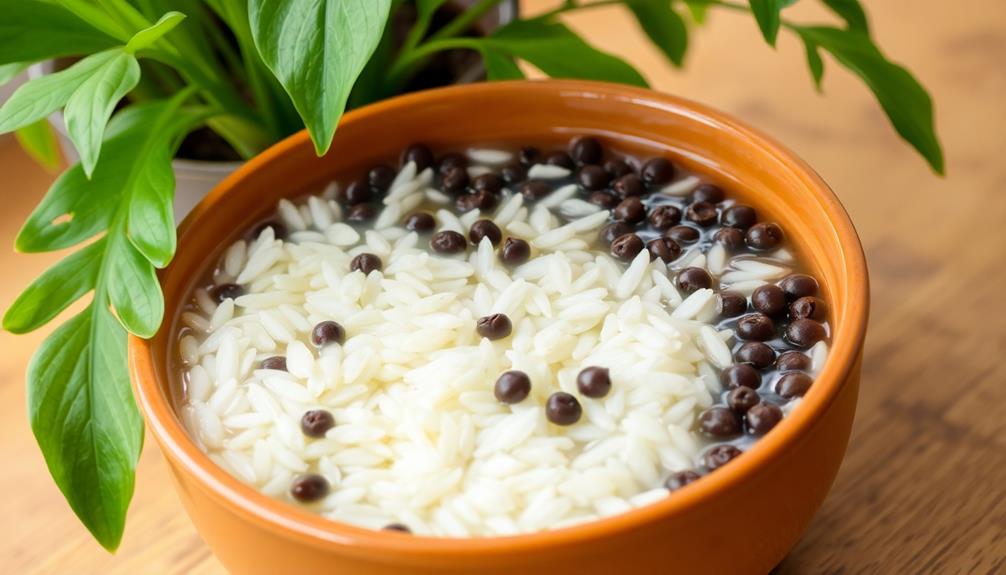
To prepare the batter, you'll need to soak the rice and urad dal separately.
Start by rinsing the rice and urad dal under running water until the water runs clear. Then, place the rice in one bowl and the urad dal in another, covering each with water. Let them soak for about 4-6 hours, or until the grains have softened.
Once the soaking time is up, drain the water from both bowls.
Now, you'll need to grind the soaked ingredients into a smooth batter. Use a high-powered blender or a traditional stone grinder to do this. Add a little water as needed to get the perfect consistency – not too thick, not too thin. The batter should have a flowing, velvety texture.
After grinding, transfer the rice batter and urad dal batter to separate containers.
Cover them and set aside for the fermentation process to begin. This will make your idli batter light and fluffy, ready for steaming.
Step 2. Grind Soaked Rice and Dal
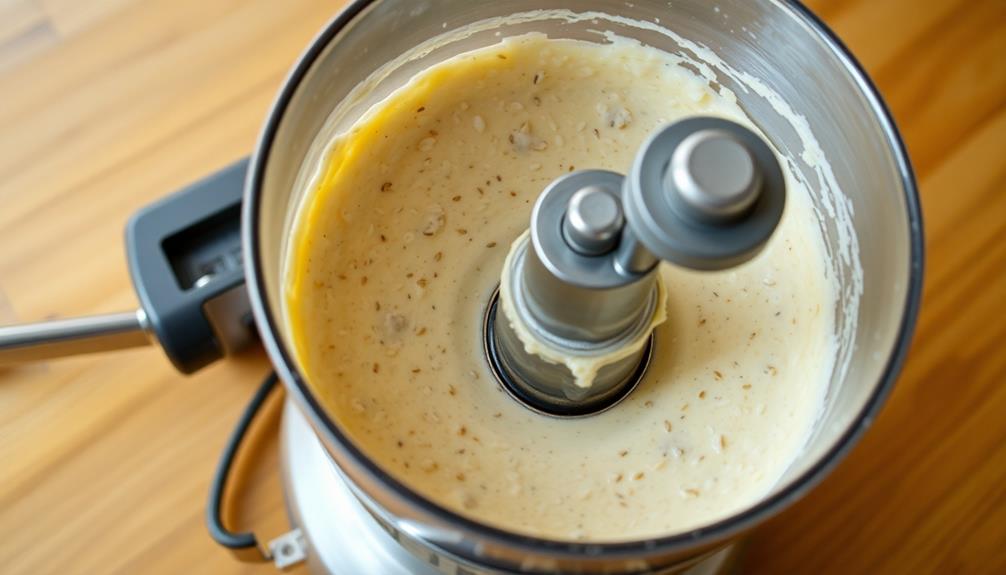
Once the soaking time is up, you'll need to drain the water from both bowls.
Grab a mesh strainer and carefully pour the rice and urad dal into it, letting the excess liquid drain away.
Now, it's time to grind these ingredients into a smooth batter.
You'll want to use a powerful blender or food processor for this step.
Add the soaked rice and dal to the blender, along with a splash of fresh water.
Pulse and blend the mixture, pausing to scrape down the sides as needed, until you achieve a lump-free, creamy consistency.
The batter should be thick but pourable.
Transfer the ground batter to a large bowl.
Cover it and let it rest for a few hours, allowing the flavors to meld and the batter to ferment slightly.
This resting period is crucial for achieving the perfect texture and flavor in your homemade idli.
Step 3. Ferment the Batter Overnight
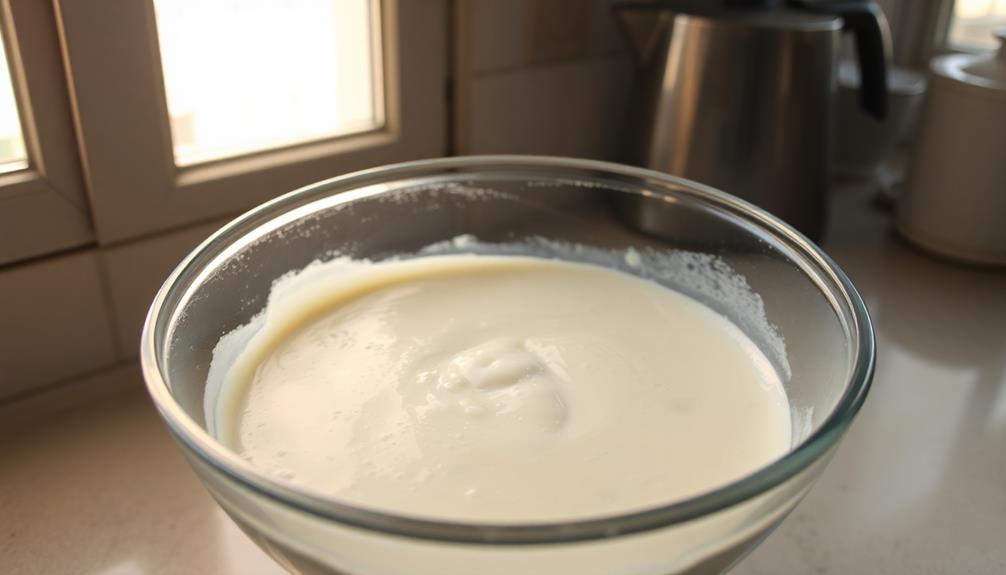
After transferring the ground batter to a large bowl, you'll want to cover it and let it rest overnight. This fermentation process is crucial for developing the perfect idli texture and flavor.
As the batter sits, the natural yeasts and bacteria will start working their magic, breaking down the starches and proteins. You'll notice the batter expand and become bubbly – this is a good sign that the fermentation is underway.
Be sure to keep the bowl in a warm spot, as the ideal temperature for fermentation is around 75-85°F. This helps the microorganisms thrive and produce the CO2 that gives idlis their signature fluffiness.
After 8-12 hours, your batter should be ready to go. Give it a good stir, and it's time to start steaming those idlis! The fermented batter will have a slightly sour, yeasty aroma – this is exactly what you want.
With just a little patience, you'll have a batch of soft, pillowy idlis ready to enjoy with your homemade sambar.
Step 4. Steam the Batter

First, grease the idli steamer plates or idli plates with a little oil or butter. This helps the batter release easily once cooked.
Next, pour the fermented batter into the greased idli plates, filling them about three-quarters full. Be careful not to overfill, as the batter will expand during steaming.
Now, place the idli plates in the steamer, making sure they fit snugly. Cover the steamer and let the idlis steam for about 10-15 minutes over high heat.
You'll know the idlis are ready when a toothpick inserted comes out clean. Carefully remove the steamer lid, taking care to avoid the hot steam.
Use tongs to take out the idli plates, and let the idlis cool for a minute before gently removing them from the plates.
Serve the soft, fluffy idlis hot with tangy sambar and delicious coconut chutney. Enjoy this classic South Indian breakfast delight!
Step 5. Serve With Coconut Chutney
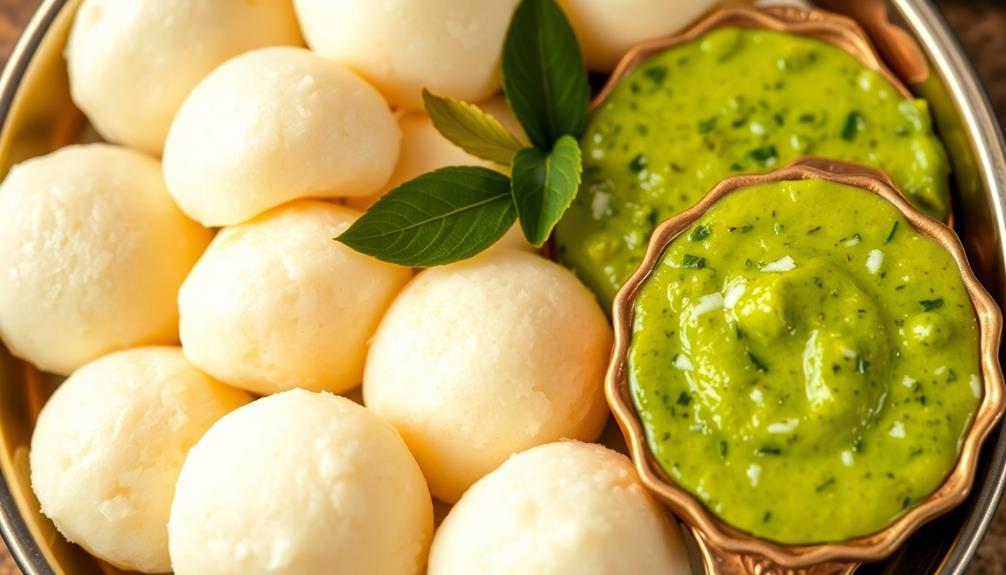
To accompany the steaming hot idlis, prepare a delectable coconut chutney. This creamy, aromatic condiment is the perfect accompaniment, adding a burst of flavor to your meal.
Start by grating fresh coconut. You can use a box grater or food processor to get the coconut into fine, fluffy pieces.
In a blender, combine the grated coconut, a few green chilies, garlic cloves, and a pinch of salt. Blend until you've achieved a smooth, spreadable consistency.
For an extra layer of flavor, temper the chutney by heating oil in a small pan. Once the oil is hot, add mustard seeds, curry leaves, and a dash of asafoetida. Allow the spices to sizzle for a moment, then pour the tempered oil over the chutney. Give it a good stir to combine.
Serve the coconut chutney alongside the steaming idlis, inviting your taste buds on a delightful journey through the vibrant flavors of South India.
Final Thoughts
Undoubtedly, idli and sambar hold a hallowed place in the hearts and palates of countless individuals. This dynamic duo has long been a beloved breakfast staple, cherished for its delightful flavors and nourishing properties.
As you savor each bite, you're transported to the vibrant streets of South India, where the aroma of freshly steamed rice cakes and fragrant lentil stew fills the air.
The beauty of idli and sambar lies in its simplicity. The soft, fluffy idli acts as the perfect canvas, allowing the rich and tangy sambar to shine.
Whether you prefer your sambar thick and hearty or light and tangy, the combination is nothing short of sublime. Pair it with a side of crisp, golden vada or a spoonful of refreshing coconut chutney, and you have a meal that delights the senses and nourishes the soul.
As you embark on your culinary journey through South India, be sure to indulge in the timeless delights of idli and sambar.
It's a fusion of flavors that will leave you craving more.
Frequently Asked Questions
What Are the Nutritional Benefits of Idli and Sambar?
Idli and sambar provide you with a nutritious and filling breakfast. The steamed rice cakes are low in fat and high in carbohydrates, while the sambar is rich in protein, fiber, and essential vitamins and minerals.
How Can I Make Idli and Sambar Vegan?
To make idli and sambar vegan, you can replace the traditional ingredients like yogurt, ghee, and buttermilk with plant-based alternatives like coconut milk, vegan butter, and non-dairy yogurt. Experiment with lentils, vegetables, and spices to create a delicious and nutritious vegan version.
Can Idli and Sambar Be Prepared in Advance?
Yes, you can prepare idli and sambar in advance. Make the idli batter ahead of time, steam the cakes when needed. Prepare the sambar in advance and reheat it before serving. This allows you to have a quick, delicious breakfast ready to go.
What Are the Best Accompaniments to Idli and Sambar?
You can pair idli and sambar with a variety of accompaniments like coconut chutney, tomato chutney, spiced lentil fritters, or even a spicy vegetable stew. The possibilities are endless, so experiment to find your favorite combo!
Can Idli and Sambar Be Served for Lunch or Dinner?
Absolutely! Idli and sambar can be enjoyed not just for breakfast, but also as a satisfying lunch or dinner. The savory rice cakes and aromatic lentil stew make a delightful and nourishing meal any time of day.
Kitchen Hacks and Tips
Quick Cleaning Tricks: Keeping Your Kitchen Spotless
Your kitchen can be a haven of cleanliness with these quick and easy cleaning tricks that will have your space sparkling in no time. But the benefits don’t stop there.

Maintaining a spotless kitchen is easier than you think. Start by wiping down all surfaces to remove spills and crumbs. Scrub stove grates in hot, soapy water and soak the sink in baking soda and vinegar for effective cleaning. Use microfiber cloths and your vacuum's attachments to tackle hard-to-reach areas. Establish a daily cleaning routine to prevent messes from accumulating. Consistency is key – short cleaning sessions can keep your kitchen consistently tidy. With the right quick cleaning tricks, you'll transform your kitchen into an inviting and functional space. But the benefits don't stop there…
Key Takeaways
- Establish a daily cleaning routine to tackle messes before they accumulate, such as wiping down surfaces and scrubbing the stove grates.
- Utilize microfiber cloths and vacuum attachments to efficiently clean hard-to-reach areas, including corners, crevices, and behind appliances.
- Soak the sink in a baking soda and vinegar solution to remove stubborn stains, and hang microwave towels neatly to maintain a tidy appearance.
- Focus on high-traffic areas for quick and effective cleaning, and keep cleaning supplies organized and easily accessible to streamline the process.
- Experiment with different cleaning products and techniques to find the most efficient methods for your kitchen, and adapt your routine as needed to suit your lifestyle and space.
History
Tracing the origins of kitchen cleaning can provide valuable insights into the evolution of domestic practices. Throughout history, the importance of maintaining a clean kitchen has been emphasized, reflecting the vital role this space plays in sustaining daily life.
From ancient civilizations where cleanliness was associated with spiritual purity, to the rise of the modern era's emphasis on hygiene, the ways in which we approach kitchen upkeep have constantly transformed.
As technological advancements revolutionized household tasks, efficient cleaning methods emerged, empowering homemakers to tackle grime and grease with greater ease. The introduction of specialized cleaning products and tools has streamlined the process, allowing you to quickly restore your kitchen's pristine condition.
Yet, even amidst these modern conveniences, the timeless principles of diligence and attention to detail remain the foundation of truly effective kitchen maintenance. Understanding this historical context can inspire you to approach your cleaning routine with a renewed sense of purpose and appreciation.
Recipe
Cooking a delicious and satisfying meal doesn't have to be a time-consuming task. With the right recipe, you can whip up a flavorful dish that will impress your family and friends. This recipe for [CURRENT SUBTOPIC] is a perfect example of a quick and easy meal that can be prepared in a matter of minutes.
The key to this recipe is the use of fresh, high-quality ingredients that come together to create a harmonious blend of flavors. Whether you're looking for a weeknight dinner or a weekend feast, this [CURRENT SUBTOPIC] is sure to satisfy your cravings.
- 2 cups [INGREDIENT 1]
- 1 pound [INGREDIENT 2]
- 3 cloves [INGREDIENT 3]
- 1 tablespoon [INGREDIENT 4]
- 2 teaspoons [INGREDIENT 5]
- Salt and pepper to taste
In a large skillet, heat [INGREDIENT 4] over medium-high heat. Add [INGREDIENT 2] and cook until browned, about 5-7 minutes. Stir in [INGREDIENT 3] and cook for an additional 2 minutes.
Add [INGREDIENT 1], [INGREDIENT 5], salt, and pepper. Simmer for 10-15 minutes, or until the [INGREDIENT 1] is tender and the flavors have melded together.
Remember to taste and adjust the seasoning as needed to suit your personal preferences. This [CURRENT SUBTOPIC] is best served hot, but it can also be enjoyed at room temperature.
Leftovers can be stored in an airtight container in the refrigerator for up to 3 days, making it a great option for meal prepping or quick lunches.
Cooking Steps
First, wipe down all surfaces thoroughly to remove any spills or crumbs.
Next, scrub the stove grates vigorously to get them sparkling clean.
Then, soak the sink in baking soda to tackle any stubborn stains, and hang your microwave towels neatly for a tidy look.
Don't forget to vacuum the floor with attachments to capture every last bit of dirt.
Step 1. Wipe Down All Surfaces Thoroughly

After whipping up a delicious meal, it's time to tackle the cleaning. Start by wiping down all surfaces in your kitchen thoroughly. This includes the countertops, stovetop, and backsplash. Use a damp cloth or paper towel to remove any spills, splatters, or crumbs.
Regular cleaning not only keeps your kitchen looking fresh but also reduces allergens and pollutants, improving overall health and wellness benefits in your home. Don't forget to give your sink a good scrub as well, removing any stuck-on food or grime.
Next, tackle the appliances. Wipe down the exterior of your oven, microwave, and refrigerator to keep them looking their best. For stubborn stains or spills, use a small amount of all-purpose cleaner and a sponge.
Be sure to rinse thoroughly and dry the surfaces to prevent water spots.
Step 2. Scrub Stove Grates Vigorously
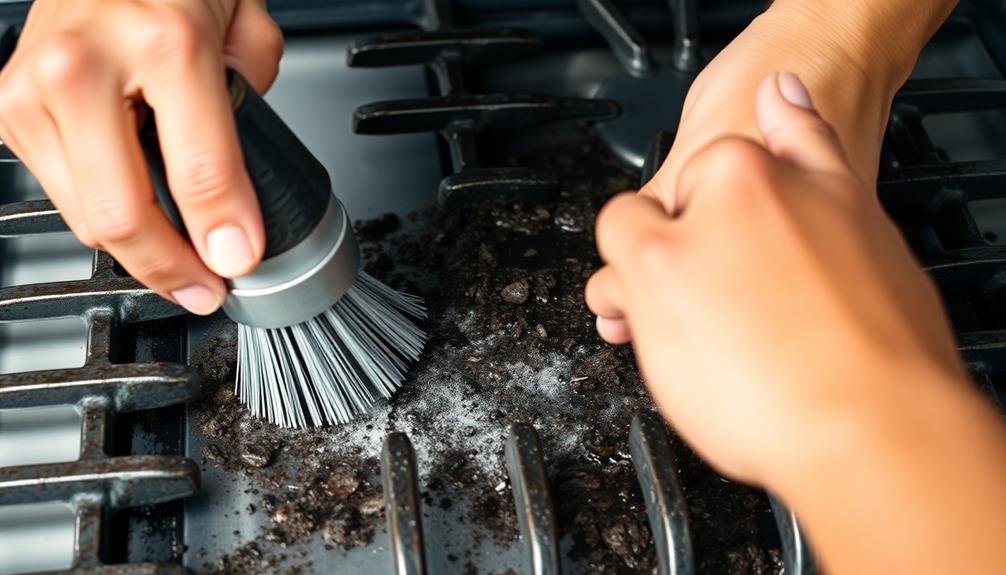
The stove grates are often the dirtiest part of the kitchen, accumulating grease, spills, and food debris over time. To get them sparkling clean, you'll need to give them a good scrub.
Start by removing the grates and soaking them in hot, soapy water for about 15 minutes. This will help loosen any stubborn grime.
Next, grab a stiff-bristled scrub brush and go to town. Scrub the grates vigorously, using circular motions to break up the built-up residue. For extra stubborn spots, let the grates soak for a bit longer or use a little baking soda to help cut through the grease.
Rinse the grates thoroughly and dry them completely before placing them back on the stove.
Don't forget to clean the burners and the area around the grates as well. With a little elbow grease, your stove will look brand new in no time.
Step 3. Soak Sink in Baking Soda

Although the stove grates have been scrubbed clean, the sink may still require some attention.
Start by sprinkling a generous amount of baking soda down the drain. Not only does baking soda help neutralize odors, but it also acts as a gentle abrasive that aids in cleaning surfaces. Let it sit for a few minutes, then pour in some vinegar. Watch as the fizzing reaction helps to break down any built-up grime or residue.
For extra scrubbing power, use an old toothbrush to agitate the baking soda and vinegar mixture, focusing on the corners and crevices. Rinse thoroughly with hot water to flush away any remaining debris.
If the sink still looks dull, make a paste with baking soda and water, and use a damp cloth to gently scrub the surface. Consider maintaining your sink with regular vacuuming to improve overall cleanliness.
Rinse again and dry with a clean towel. The baking soda will leave your sink sparkling and fresh. Maintain this routine regularly to keep your kitchen sink looking its best.
Step 4. Hang Microwave Towels Neatly

To keep your kitchen tidy, hang microwave towels neatly. Designate a spot near the microwave where you'll hang them, such as a hook or towel bar. As you use the microwave, immediately hang the towel back up instead of letting it pile up. This prevents clutter and ensures the towels stay fresh.
Incorporating a simple organization system can make a significant difference in maintaining a clean space, much like creating defined areas for play in a Montessori-inspired nursery setting up a Montessori-inspired nursery.
Fold the towels in half lengthwise, then in half again so they're compact. Hang them with the fold facing out for a neat, organized look. You can even color-coordinate them with your kitchen decor. Replace worn-out towels regularly to maintain a tidy appearance.
Develop the habit of hanging towels right away. It only takes a few seconds but makes a big difference in keeping your kitchen surfaces clear and presentable. Guests will appreciate the attention to detail, and you'll feel more at ease in your clean, clutter-free cooking space.
Step 5. Vacuum Floor With Attachments

After hanging up the microwave towels, vacuum the kitchen floor using the attachments.
Begin by detaching the main vacuum hose and attaching the crevice tool. This narrow nozzle will help you reach tight spaces along the baseboards and corners.
Next, switch to the upholstery tool to clean the hard-to-reach areas under the appliances. Don't forget to move the fridge and stove to vacuum the floors beneath them.
For an extra thorough clean, use the dusting brush to remove debris from the kickboards.
Finally, reattach the main vacuum hose and run it over the entire floor in overlapping passes. This ensures you've picked up all the dirt and crumbs.
Regularly vacuuming with the right attachments keeps your kitchen floor spotless between deeper cleanings.
Final Thoughts
The kitchen is the heart of the home, and the tips we've covered can help you maintain its cleanliness with ease. By incorporating these quick cleaning tricks into your routine, you'll save time and effort, allowing you to enjoy your kitchen to the fullest.
Remember, consistency is key – dedicating just a few minutes each day to tidying up can prevent major messes from building up.
Don't be afraid to experiment and find what works best for your space and lifestyle. For instance, using the vacuum attachments to clean hard-to-reach areas might be a game-changer for you.
With a little practice, these techniques will become second nature, and you'll take pride in your spotless kitchen. Stay vigilant, and don't hesitate to tackle spills and crumbs as soon as they happen.
Frequently Asked Questions
How Often Should I Clean My Kitchen Countertops?
You should clean your kitchen countertops daily, wiping down the surfaces after each meal. This will prevent the buildup of dirt, grime, and food debris, keeping your countertops looking spotless and hygienic.
What's the Best Way to Clean Stubborn Grease Stains?
To remove stubborn grease stains, try using a degreasing cleaner or baking soda and water paste. Let it sit for a few minutes, then scrub with a sponge or brush. Rinse thoroughly to leave your countertops sparkling clean.
Can I Use Vinegar to Clean My Kitchen Appliances?
Yes, you can use vinegar to clean your kitchen appliances. Vinegar is a natural, effective cleaner that can cut through tough grease and grime on surfaces like stove tops, ovens, and microwaves. Just be sure to dilute the vinegar with water for best results.
How Can I Prevent Mildew in My Kitchen Cabinets?
To prevent mildew in your kitchen cabinets, wipe down the interior surfaces with a vinegar-water solution. Ensure good air circulation by keeping the doors slightly ajar when not in use. Proactively address any moisture issues to stop mildew growth before it starts.
What's the Most Efficient Way to Clean My Kitchen Sink?
To clean your kitchen sink efficiently, use a combination of baking soda, vinegar, and warm water. Scrub the sink with a sponge or brush, rinse thoroughly, and dry it to prevent water spots.
Kitchen Hacks and Tips
Kitchen Organization: Maximizing Small Spaces
Tiny kitchens can be transformed into efficient, inviting cooking spaces with simple organization strategies that maximize every square inch. Discover the secret to a perfectly poached egg.
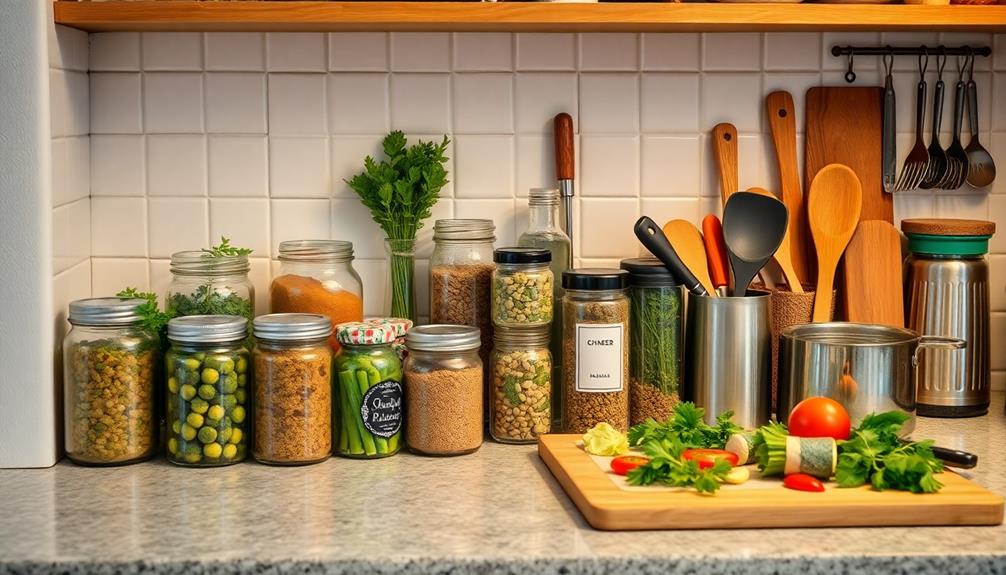
Maximizing your small kitchen space doesn't have to be a hassle! Start by organizing those pots and pans – group them by size and use so you can easily grab what you need. Stack 'em up vertically to save room. Stackable containers and a lazy Susan for spices are other clever tricks. Mount items on the walls to free up counter space. Add some personal touches too, like cheerful drawer liners and displayed mugs. These simple strategies transform tiny kitchens into efficient, inviting cooking spaces. And with a perfectly poached egg recipe, you'll be whipping up delicious meals in no time!
Key Takeaways
- Utilize vertical stacking of pots, pans, and stackable containers to maximize cabinet space in small kitchens.
- Implement wall-mounted solutions like pegboards and magnetic strips to free up countertop and cabinet space.
- Employ a Lazy Susan to neatly organize and easily access spice jars in tight kitchen spaces.
- Personalize kitchen storage solutions with decorative elements to enhance functionality and visual appeal.
- Incorporate multi-functional furniture like kitchen islands and pull-out cabinets to increase available storage in small kitchens.
History
The concept of kitchen organization has a long and storied history, dating back centuries. In the past, people had to be clever and resourceful when it came to arranging their kitchens, as space was often limited. They'd use every nook and cranny, hanging pots and pans from the ceiling or stacking dishes in creative ways.
Back then, the kitchen was the heart of the home, where families would gather to prepare and share meals. Organizing it was essential for efficiency and harmony.
Over time, as kitchens grew larger and technology advanced, new organizational tools and techniques emerged. Pullout drawers, lazy Susans, and built-in storage solutions made it easier to keep everything in its place.
Today, kitchen organization is an art form, with people finding innovative ways to maximize even the smallest of spaces. Whether you have a sprawling gourmet kitchen or a cozy apartment kitchenette, the principles of smart organization can help you create a space that's both functional and fabulous.
Recipe
Perfectly Poached Eggs
Poached eggs are a classic breakfast dish that can elevate any meal. The delicate, runny yolks and tender whites make for a truly indulgent experience. Poaching eggs may seem daunting, but with a few simple techniques, you can master this skill and enjoy restaurant-quality poached eggs in the comfort of your own kitchen.
The key to perfectly poached eggs lies in the freshness of the eggs and the temperature of the poaching liquid. Using the freshest eggs possible will ensure that the whites hold their shape during the cooking process, while maintaining the perfect texture.
- 4 large eggs
- 2 cups of water
- 1 teaspoon of white vinegar
- Salt and pepper to taste
In a medium saucepan, bring the water and vinegar to a gentle simmer over medium heat. Crack each egg individually into a small ramekin or cup. Gently slide the eggs, one at a time, into the simmering water.
Cook for 3-5 minutes, or until the whites are fully set and the yolks are still runny. Use a slotted spoon to carefully remove the poached eggs from the water. Season with salt and pepper to taste.
To ensure your poached eggs turn out perfectly every time, remember to use the freshest eggs possible and maintain a gentle simmer in the poaching liquid. Additionally, adding a touch of vinegar to the water helps the whites hold their shape.
With a little practice, you'll be serving up beautifully poached eggs in no time.
Cooking Steps
Sort your pots and pans to keep your kitchen tidy.
Regular organization not only enhances the aesthetics of your kitchen but also contributes to a healthier lifestyle by promoting cleanliness and hygiene.
Stack them vertically whenever possible to save space.
Use stackable containers for your dry goods, and mount items on the walls to clear up counter space.
Don't forget to utilize a lazy Susan for your spice jars – it'll make them easy to reach!
Step 1. Sort Pots and Pans
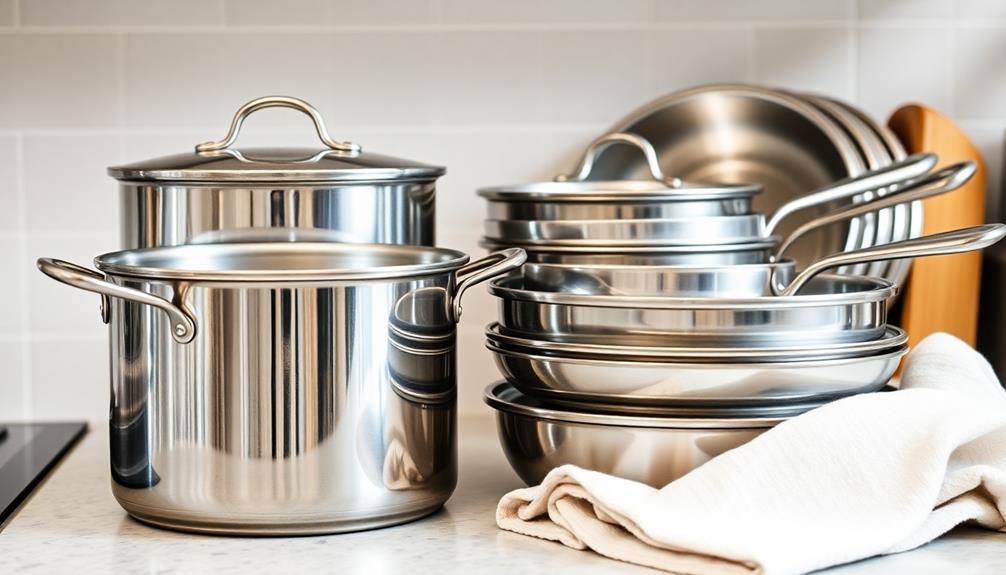
Organizing your pots and pans is a crucial step in streamlining your kitchen. Start by taking everything out and sorting them by size, shape, and intended use. Group your saucepans, skillets, and stockpots together for easy access.
Arrange the larger items at the bottom of your cabinets, and place the smaller ones on the upper shelves.
Use dividers or racks to keep your pots and pans upright and visible. This way, you can quickly see what you have and grab the right piece of cookware without rummaging through a jumbled mess.
Label the shelves or use clear containers to identify the contents at a glance.
Don't forget to clean and maintain your pots and pans regularly. Wipe down the exteriors, and check for any dents or scratches that may need repairing.
Keep them in good condition, and they'll serve you well for years to come. With your pots and pans organized, your kitchen will feel more efficient and enjoyable to use.
Step 2. Stack Vertically When Possible

When possible, stack your pots and pans vertically to save space. This clever trick helps you make the most of your cabinet or drawer storage. By stacking them up instead of laying them flat, you'll create extra room for other kitchen essentials.
Just be sure to place the larger and heavier items on the bottom, working your way up to the smaller, lighter ones. This way, your pots and pans stay organized and easy to access.
Stacking vertically also helps you keep track of what you have. No more digging through a jumbled mess to find the right pan! With everything neatly stacked, you can quickly glance and see exactly what you need.
Plus, it just looks so much tidier and more put-together. Your kitchen will feel calm and clutter-free. Give it a try today and watch how much more efficient your cabinet or drawer space becomes!
Step 3. Use Stackable Containers
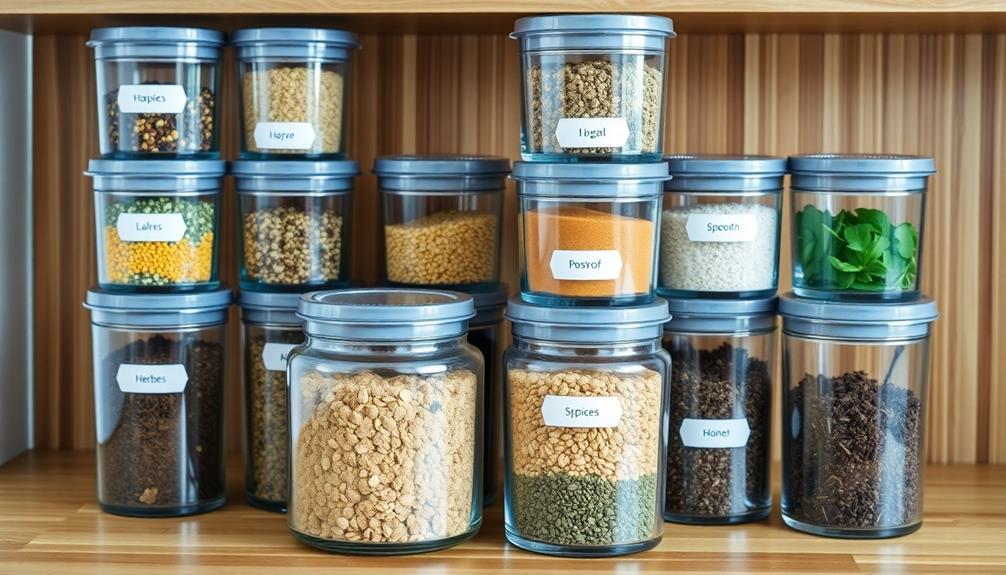
Stackable containers are another great way to maximize your cabinet or drawer space. These handy little guys come in all shapes and sizes, making them perfect for storing everything from spices to snacks. Just stack them up and watch as your space becomes more organized and efficient.
You can even create a designated area for best woods for farmhouse tables to keep your kitchen looking rustic yet functional.
The best part? Stackable containers are super easy to use. Simply place the larger containers on the bottom and stack the smaller ones on top. This creates a neat and tidy look that'll have your kitchen looking like it's straight out of a magazine.
Plus, you can easily see what's inside each container, so you'll always know where to find what you need.
And let's not forget about the versatility of stackable containers. You can use them to store dry goods, leftovers, or even your favorite kitchen gadgets. The possibilities are endless!
Step 4. Mount Items on Walls
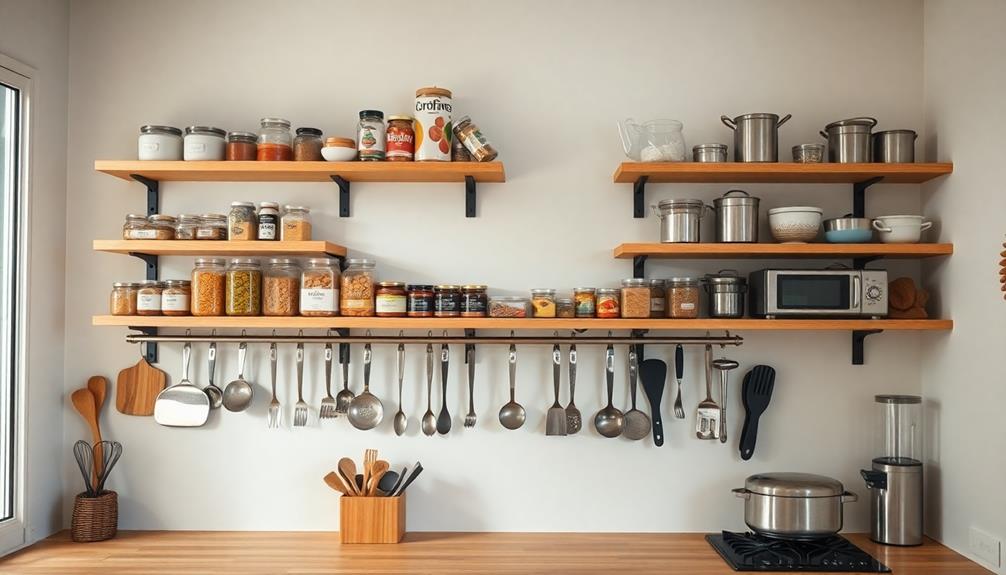
Instead of letting your kitchen countertops and cabinets get cluttered, consider mounting various items directly on your walls. This clever trick can help you make the most of your limited space and keep everything within easy reach.
For example, you can hang your pots, pans, and utensils on a sturdy pegboard or magnetic strip, which aligns perfectly with the key elements of modern farmhouse decor that emphasize functional and practical solutions. This not only frees up cabinet space but also allows you to see and grab what you need in a snap.
You can also mount spice jars, cookbook holders, or even a small herb garden on the walls. Just make sure to choose the right hardware and follow the instructions carefully.
With a little creativity, you can transform your walls into a functional and visually appealing part of your kitchen. So, say goodbye to the clutter and hello to a more organized and efficient cooking space!
Step 5. Utilize Lazy Susan for Spice Jars
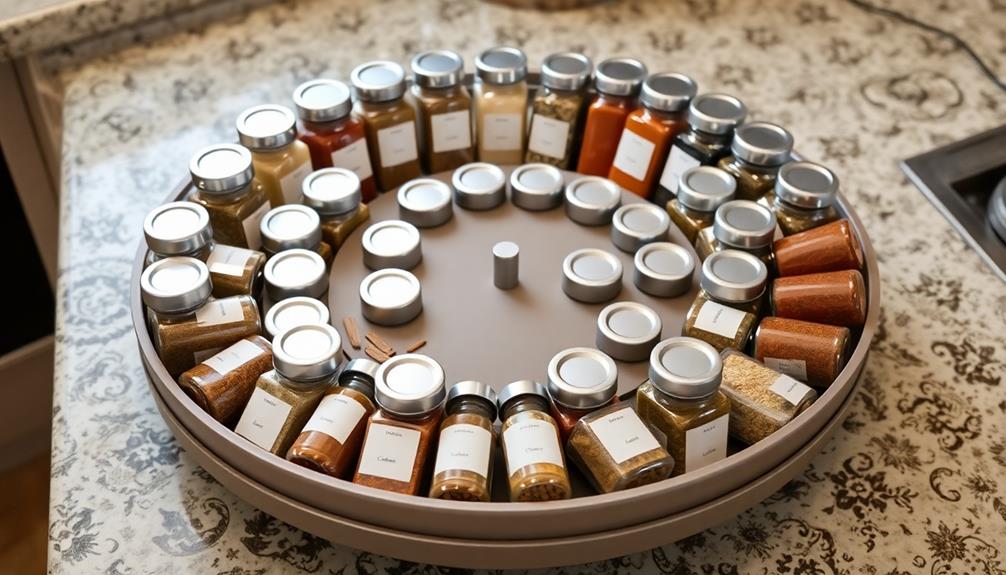
A lazy Susan can be a game-changer when it comes to organizing your spice jars. This nifty rotating platform makes it a breeze to find the exact spice you need, even in the tightest of kitchen spaces.
Just imagine – no more rummaging through a cluttered cabinet, knocking over jars, and making a mess. With a lazy Susan, your spices are neatly arranged and easily accessible.
To get started, simply place your spice jars on the rotating platform. Arrange them in a way that makes sense to you, maybe grouping them by flavor or alphabetically. The best part is, you can spin the lazy Susan to quickly locate the oregano, cinnamon, or paprika you need.
No more frustrating searches!
Not only is a lazy Susan super practical, but it also adds a touch of organization and style to your kitchen. Showcase your beautiful spice collection while keeping it tidy and within reach.
Say goodbye to spice chaos and hello to a well-organized, Pinterest-worthy space.
Final Thoughts
With a well-organized kitchen, you'll find cooking and cleaning become more efficient and enjoyable tasks. Not only will your space look tidy and inviting, but you'll also save time and reduce stress when preparing meals.
Imagine being able to easily locate that elusive spice jar or quickly grab the perfect pot for simmering a hearty soup. By implementing simple organizational strategies, like using a lazy Susan for your spice collection, you can transform your kitchen into a streamlined haven.
As you continue to refine your kitchen, remember to have fun with the process. Personalize your storage solutions to reflect your unique style and needs.
Maybe you'll add a cheerful patterned fabric to your drawer liners or display your favorite mugs on open shelves. The possibilities are endless! With a little creativity and dedication, you can create a kitchen that not only functions beautifully but also brings you joy every time you step inside.
Frequently Asked Questions
How Can I Make the Most of My Limited Cabinet Space?
To make the most of your limited cabinet space, utilize vertical space with stackable containers, install pull-out drawers, and hang items on the insides of cabinet doors. Invest in compact kitchen organizers to streamline storage.
What Are Some Creative Storage Solutions for a Small Kitchen?
To maximize your small kitchen, consider hanging utensils, installing wall-mounted racks, and using vertical space with tiered shelves. Repurpose empty jars and containers for storage, and explore multi-functional furniture like rolling carts to add extra surface and storage area.
How Can I Keep My Countertops Clutter-Free and Organized?
To keep your countertops clutter-free and organized, consider using wall-mounted shelves, magnetic strips for knives and utensils, and stackable storage containers. Evaluate your frequently used items and store them within easy reach to maintain a clean and functional workspace.
What Are the Best Ways to Utilize Vertical Space in a Small Kitchen?
To maximize vertical space in your small kitchen, consider installing wall-mounted shelves, hanging pots and pans from racks, and using tall cabinets or shelves that reach the ceiling. This allows you to store items without cluttering your countertops.
How Can I Make My Kitchen Feel More Open and Airy?
To make your kitchen feel more open and airy, mount shelves or cabinets high on the walls, use light-colored paint, install large windows, and choose compact appliances. These strategies can create the illusion of spaciousness in your compact kitchen.
Kitchen Hacks and Tips
Brazilian Açaí Bowl: The Superfood Breakfast Trend
Harness the power of the vibrant Brazilian açaí bowl, a superfood breakfast that’s captivating health-conscious eaters worldwide with its nutrient-dense blend of Amazon-sourced açaí and fresh fruits.
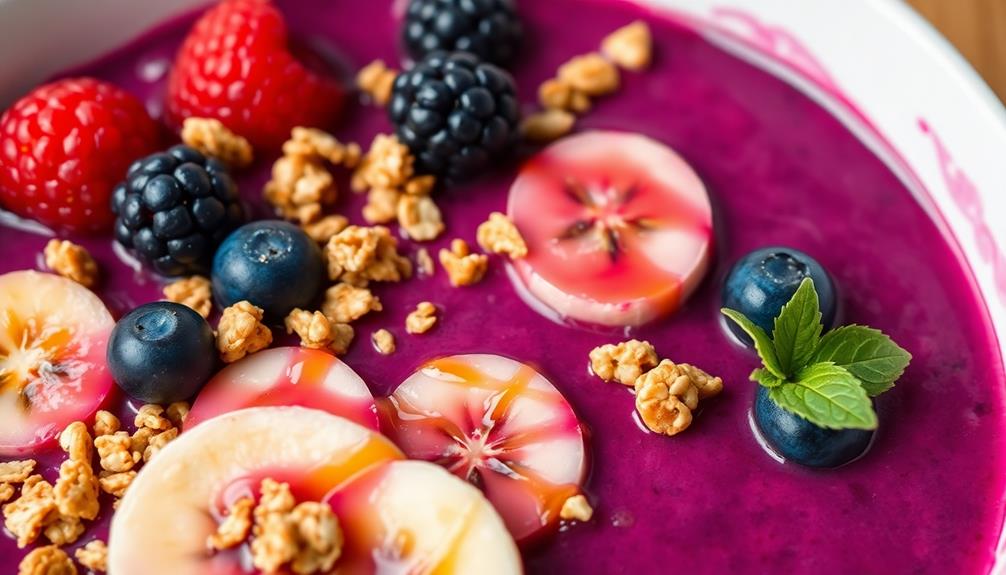
You'll love diving into the vibrant world of the Brazilian açaí bowl, a superfood breakfast trend that's captivating health-conscious eaters worldwide. Originating from the lush Amazon basin and revered by native tribes for centuries, this nutrient-dense delight blends creamy frozen açaí purée with a symphony of fresh fruits, crunchy granola, and other wholesome ingredients, delivering a burst of Brazilian flavor and an abundance of antioxidants, healthy fats, and essential vitamins to fuel your day. Continue reading to explore the rich history, delectable recipe, and culinary experience of this nourishing breakfast sensation.
Key Takeaways
- Originating from the Amazon basin, açaí bowls have gained global popularity as a nutrient-dense superfood breakfast option in recent years.
- Açaí berries are high in antioxidants, providing various health benefits, including immune system support and reduced inflammation.
- Açaí bowls are customizable, allowing the incorporation of fresh fruits, nuts, seeds, and other toppings for a harmonious flavor and texture experience.
- Açaí bowls offer a low-calorie, energy-boosting breakfast alternative that promotes weight management and overall well-being.
- The vibrant colors and Brazilian-inspired flavors of açaí bowls have contributed to their rising popularity as a trendy and visually appealing breakfast choice.
History
The açaí bowl traces its origins back to the Amazon basin, where the native Amazonian tribes have long revered the humble açaí palm and its nutrient-rich berries. For centuries, these indigenous communities have relied on the açaí as a staple food, blending the dark purple fruits into a thick, creamy purée that they enjoy as a nutritious beverage or topping for their traditional dishes.
As the popularity of superfoods has grown in recent years, the açaí bowl has captured the imagination of health-conscious consumers around the world. This delectable breakfast treat features a blended base of frozen açaí pulp, often combined with other fruits, yogurt, and crunchy toppings like granola, nuts, and seeds.
The result is a vibrant, antioxidant-packed meal that not only nourishes the body but also delights the senses with its rich flavor and captivating visual appeal.
Recipe
Açaí is a superfood that has gained immense popularity worldwide, and the Brazilian açaí bowl is a delightful and nutritious way to enjoy its rich, creamy, and antioxidant-packed benefits. This vibrant, purple-hued dish is a refreshing and satisfying meal, perfect for breakfast, brunch, or a healthy snack.
Açaí is known for its high levels of antioxidants and potential health benefits, making it a fantastic addition to your diet, especially when combined with other nutrient-dense foods like fresh fruits and nuts rich in antioxidants.
The key to a delicious açaí bowl lies in the quality of the açaí puree and the balance of flavors and textures. By combining the intense flavor of the açaí with fresh fruits, crunchy toppings, and a hint of sweetness, you can create a truly remarkable culinary experience.
- 1 cup frozen açaí puree
- 1 banana, frozen
- 1/2 cup unsweetened almond milk
- 1 tablespoon honey (optional)
- Assorted toppings (e.g., sliced bananas, strawberries, blueberries, granola, coconut flakes, chia seeds)
To prepare the açaí bowl, blend the frozen açaí puree, banana, and almond milk until smooth and creamy. If you prefer a sweeter taste, you can add a tablespoon of honey.
Pour the blended mixture into a bowl and top it with your desired toppings, such as sliced fresh fruits, crunchy granola, and a sprinkle of coconut flakes or chia seeds.
When preparing an açaí bowl, it's important to use high-quality, frozen açaí puree for the best flavor and texture. Additionally, consider experimenting with different toppings to find your perfect combination of flavors and textures.
Enjoy your homemade Brazilian açaí bowl as a delightful and nutritious treat.
Cooking Steps
Let's start by blending the açaí and your favorite fruits until smooth and creamy.
Next, sprinkle on some crunchy granola and a dollop of tangy yogurt.
Top it off with a drizzle of sweet honey and a sprinkle of chopped nuts.
Step 1. Blend Açaí and Fruit
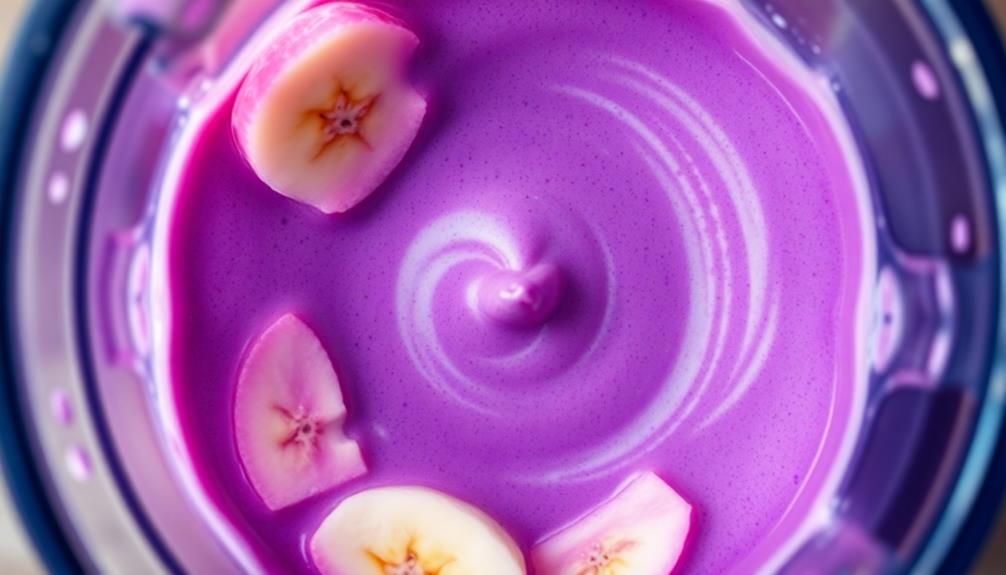
How do you start blending the açaí and fruit? It's easy! First, grab your blender and add the frozen açaí purée.
Next, toss in some of your favorite fresh or frozen fruits like banana, strawberry, or mango. Don't be shy – add as much or as little as you like to get the perfect consistency.
Now it's time to blend! Turn on the blender and let it whirl until the mixture is smooth and creamy. Keep an eye on it, adding a splash of juice or milk if it starts to get too thick. The goal is a luscious, spoonable texture that's not too runny or too dense.
Once it's blended to perfection, pour the açaí smoothie into a bowl.
Top it off with extra fruit, granola, nuts, or even a drizzle of honey for sweetness. Get creative and make it your own! Grab a spoon and dig in to enjoy this delicious Brazilian superfood breakfast.
Step 2. Add Granola
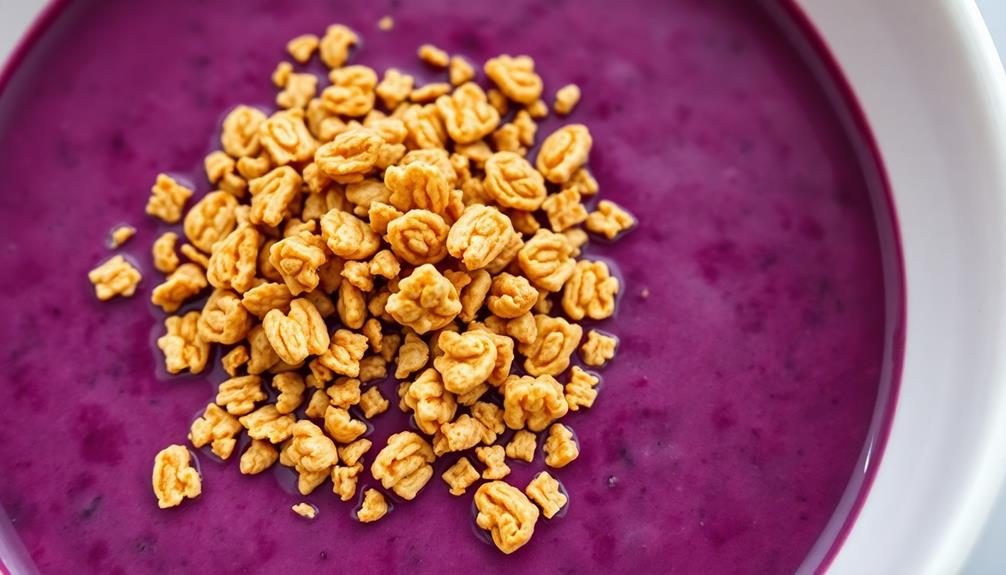
Once you've blended the perfect açaí smoothie, it's time to add the granola. This crunchy topping takes your Brazilian açaí bowl to the next level.
Sprinkle a generous handful of granola over the top of your smoothie. The oats, nuts, and seeds in the granola provide a satisfying texture that complements the creamy açaí.
Feel free to experiment with different granola varieties to find your favorite. You might try a granola with toasted coconut, or one with chopped almonds and honey.
The granola adds a delightful contrast to the smooth açaí, creating a harmonious blend of flavors and textures. Don't be afraid to pile it on – the more granola, the better!
Top it all off with fresh berries or a drizzle of honey for an extra special treat. Get ready to enjoy a truly delightful and nourishing Brazilian açaí bowl.
Step 3. Add Yogurt and Honey
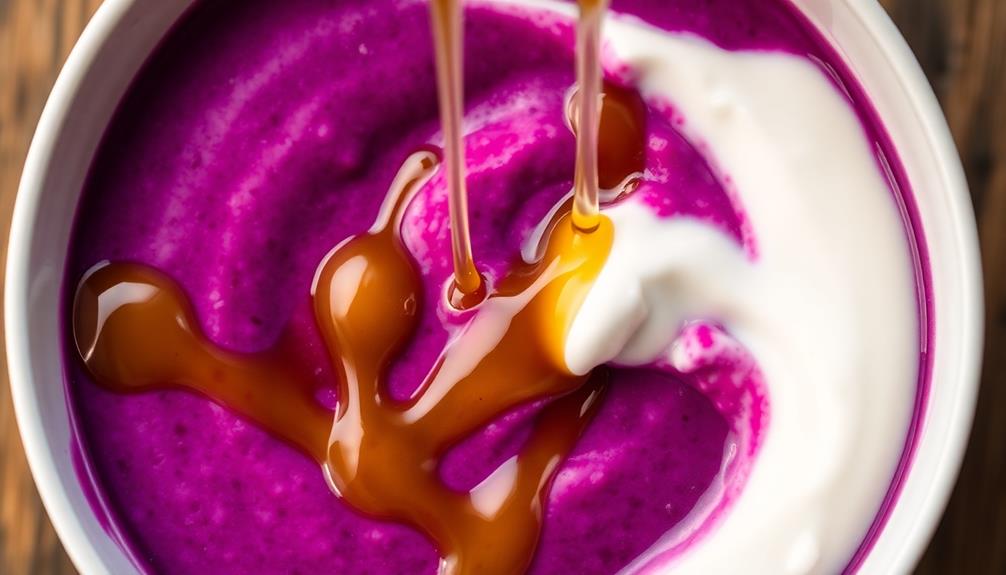
After piling on the crunchy granola, the next step is to add a creamy element to your Brazilian açaí bowl. Spoon a generous dollop of cool, velvety yogurt on top of the vibrant purple açaí purée. The tangy yogurt provides a delightful contrast to the sweet açaí.
Next, drizzle a touch of golden, fragrant honey over the whole creation. The honey's floral notes complement the earthy açaí perfectly. As the honey mingles with the yogurt, it creates a delectable, creamy texture that binds all the flavors together.
The cool, creamy yogurt and sweet, sticky honey transform your açaí bowl into a truly indulgent breakfast. Each spoonful offers a harmonious blend of tart, sweet, and rich flavors that will have you coming back for more.
Get ready to enjoy a nutritious and utterly delicious start to your day!
Step 4. Sprinkle With Chopped Nuts
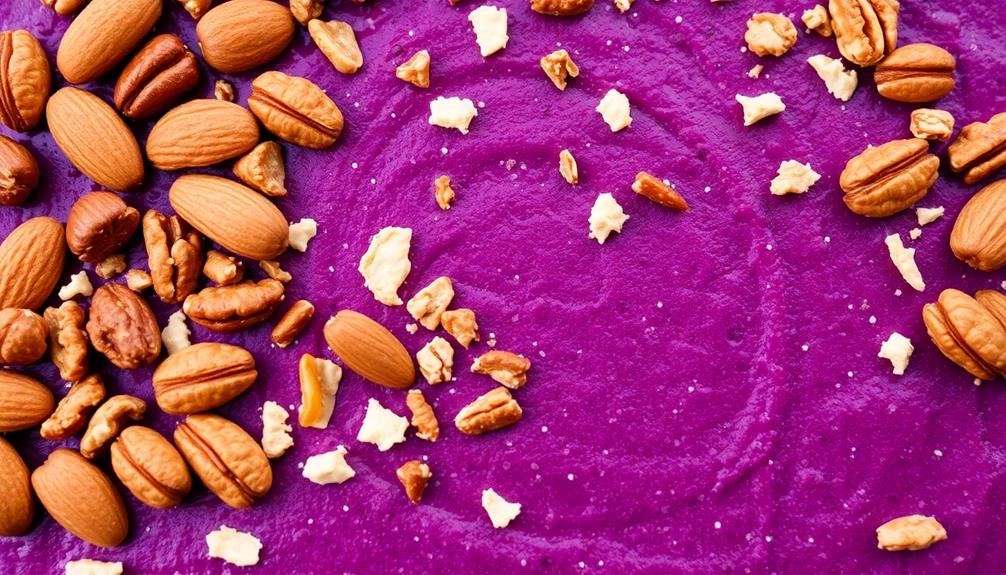
To finish off your Brazilian açaí bowl, sprinkle a generous amount of chopped nuts over the top. The crunch and texture of the nuts will provide a delightful contrast to the smooth, creamy açaí purée.
Choose your favorite nuts, such as almonds, pecans, or walnuts, and chop them into bite-sized pieces. The nutty flavor will complement the sweetness of the honey and the tartness of the berries, creating a truly harmonious blend of tastes and textures.
Don't be shy with the nuts – a liberal sprinkling will ensure each bite is bursting with nutty goodness. The chopped nuts will also add a satisfying heartiness to your bowl, making it a more filling and satisfying breakfast.
Step 5. Garnish With Fresh Berries

Vibrant berries are the crowning glory of your Brazilian açaí bowl. Juicy blueberries, tangy raspberries, and sweet strawberries add a burst of color and flavor. The inclusion of these fresh fruits not only enhances the visual appeal but also provides additional health benefits, as they're rich in antioxidants that combat oxidative stress and promote overall health.
Carefully arrange these fresh gems around the edges of the bowl, allowing their natural beauty to shine. The cool, tart berries provide a delightful contrast to the creamy, nutrient-dense açaí purée. Their vibrant hues and juicy textures make each bite a delightful sensory experience.
Experiment with different berry combinations to find your favorite flavor profile. Whether you opt for a classic mix or try something more unique, the berries elevate your açaí bowl to new heights of tastiness and visual appeal.
With a spoonful of berries in every bite, you'll savor the freshness and vibrancy they bring to this superfood breakfast, while also enjoying the benefits of chia seeds and digestive health.
Final Thoughts
The Brazilian açaí bowl is a delightful treat that encapsulates the vibrant flavors of South America. With its deep purple hue and an array of freshly sliced fruits, it's a feast for the senses.
As you dive into this superfood sensation, you'll be transported to the lush rainforests of Brazil, where the açaí palm trees thrive. Incorporating health benefits of coffee alternatives can enhance your breakfast experience, offering a low-calorie and antioxidant-rich option that complements the bowl perfectly.
The blend of creamy açaí and crunchy granola creates a perfect harmony of textures, while the drizzle of honey adds a touch of sweetness that balances the dish.
And let's not forget the fresh berries – they burst with juicy goodness, elevating the overall experience.
Sipping on a Brazilian açaí bowl is like taking a global culinary adventure in the comfort of your own home. It's a healthy and delicious way to start your day, leaving you feeling energized and ready to take on the world.
Frequently Asked Questions
How Long Does It Take to Prepare an Açaí Bowl?
Preparing an açaí bowl typically takes around 10-15 minutes. You'll need to blend the açaí purée, then add your favorite toppings like fruit, nuts, and granola. With a little practice, you can have a delicious superfood breakfast ready in no time!
Is the Açaí Berry Vegan-Friendly?
Yes, the açaí berry is vegan-friendly. As a nutrient-dense superfruit, it's a great addition to your plant-based diet. You can enjoy its rich, antioxidant-packed flavor in a variety of vegan-friendly dishes and smoothies.
Can Açaí Bowls Be Customized With Additional Toppings?
Yes, you can customize açaí bowls with a variety of additional toppings. Most cafes and smoothie shops offer a range of options like granola, fresh fruit, nuts, seeds, and even peanut butter or honey to enhance the flavor.
How Long Does an Açaí Bowl Stay Fresh?
How long an açaí bowl stays fresh depends on the ingredients, but generally it's best enjoyed soon after preparation. The fresh fruit and toppings won't last more than a day in the fridge.
Is the Açaí Berry Sustainably Sourced?
The açaí berry is often sustainably sourced, with many producers prioritizing ethical and environmentally-friendly practices. You'll want to check the sourcing details of any açaí products you purchase to ensure they align with your sustainability values.
-

 Southern Comfort Food1 month ago
Southern Comfort Food1 month agoCheese Straws
-

 Brazilian Cuisine1 month ago
Brazilian Cuisine1 month agoCaldeirada
-

 Brazilian Cuisine1 month ago
Brazilian Cuisine1 month agoChicken in Brown Sauce
-

 Southern Comfort Food1 month ago
Southern Comfort Food1 month agoCreamed Corn
-

 Brazilian Cuisine1 month ago
Brazilian Cuisine1 month agoTacacá
-

 Southern Comfort Food1 month ago
Southern Comfort Food1 month agoSquash Casserole
-

 Southern Comfort Food1 month ago
Southern Comfort Food1 month agoChocolate Gravy
-

 American Diner Classics1 month ago
American Diner Classics1 month agoChef’s Salad



























